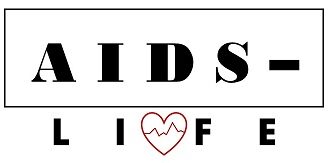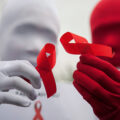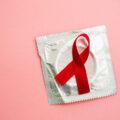Preventing HIV infection for health workers
HIV infection is a disease caused by the human immunodeficiency virus. The disease is characterized by an infectious lesion of the immune system, leading to a gradual disruption of the functioning of the entire body. As a result, acquired immunodeficiency syndrome is formed, which is accompanied by the development of infections associated with opportunistic flora and secondary malignant tumors.
Prevention of occupational HIV infection among health workers
Preventive measures are regulated by SanPiN 3.1.5.2826-10 and 3.1.5.2826-10 “Prevention of HIV infection” dated January 11, 2011 and July 21, 2016.
Prevention of HIV infection among health care workers is most relevant in surgery, dentistry, laboratories and other areas related to blood and other biological media of the body. Employees at risk should be tested for HIV infection at least once a year. A medical worker who tests positive is removed from his duties. An infected employee is not allowed to work with patients and at blood transfusion centers.
To prevent HIV infection among healthcare workers, it is important to follow a set of safety rules. This helps reduce the risk of staff contracting an immunodeficiency infection. Prevention of HIV infection in dentistry and surgery is especially important.
A nurse is most susceptible to HIV infection. She is the one who performs a number of manipulations with the patient:
- collection of primary data;
- taking swabs and material for analysis;
- initial pre-medical examination upon admission to the hospital;
- administering injections and installing venous catheters;
- patient care.
Prevention of HIV infection among medical workers is a necessary measure, because the danger of infection of medical personnel can arise at any stage of manipulation. If a person with an unknown HIV status comes to the doctor, he is considered potentially dangerous. All actions are carried out in compliance with personal protective measures regulated by SanPiN for the prevention of HIV infection.
HIV prevention in medical institutions is aimed at training staff in emergency situations, in which the risk of contracting immunodeficiency is greatest.
Infection can occur when working with a patient’s biological material when performing various types of procedures, especially invasive ones, as well as when disposing of used syringes and processing instruments.
The main causes of emergency situations leading to infection of health workers include failure to comply with safety measures for the skin and mucous membranes of personnel.
Important! Reasons leading to HIV infection among healthcare workers:
- lack of barrier safety equipment (apron, gloves, goggles, shields);
- violation of personal safety rules during invasive procedures;
- improper disposal of used instruments, including needles.
For preventive protection, medical personnel must:
- Before working with biological material, protect damaged areas of skin with an adhesive plaster or bandage.
- Change gloves after each patient. Gloves should be treated with 70% alcohol or a special solution.
- Before working with potentially hazardous biomaterials, thick latex gloves are used.
- After removing gloves, hands should be washed thoroughly with running water and soap.
- To avoid contact of biomaterial with mucous membranes, it is important to use face coverings and glasses or plastic shields.
- Immediately treat surfaces contaminated with blood or other fluid from the patient with a disinfectant. Treatment is carried out twice with an interval of 15 minutes.
- When collecting capillary blood, the laboratory technician must use a special instrument.
- Used disposable material is folded for processing and subsequent disposal in a special, puncture-resistant container.
- Residues of detergents and disinfectants must be monitored.
Any employee who has damage to the skin, especially the weeping type, is removed from work in manipulation, dressing and treatment rooms until complete recovery.
Emergency Actions
Prevention of HIV infection among medical personnel is carried out in accordance with approved SanPiNs.
In the event of an emergency, personnel must immediately:
- If the glove is damaged, remove it, wash your hands thoroughly with running water and soap, disinfect with 70% alcohol, and treat the wound with iodine solution.
- If biological material gets on the skin, treat it with 70% alcohol, rinse your hands thoroughly with running water and treat it again with an alcohol solution.
- If biological material gets into your mouth, rinse with a large volume of running water and rinse with an alcohol solution.
- If the biomaterial gets on the mucous membranes, rinse with a large volume of running water or saline solution. Rubbing mucous membranes is prohibited.
- If material gets on clothing, it is necessary to remove it and soak it in a disinfectant solution. It is important to consider that these clothes are subsequently autoclaved.
- Immediately report the accident to your immediate supervisor. All cases are recorded in a separate log.
- Start taking medications according to the regimen. The medications must be taken within the first two hours after the incident. The maximum interval for starting prophylaxis is 72 hours.
- During the period of taking medications and taking tests for HIV infection, the employee is suspended from working with patients.
Medicines for HIV prevention
If HIV infection occurs, the health care provider should initiate post-exposure measures. For this purpose drugs are used:
- Lopinavir, ritonavir with zidovudine or lamivudine.
- If it is impossible to take them, use nevirapine or abacavir once and then take the drugs according to the HAART regimen.
Any medical institution should have a primary anti-HIV first aid kit. It contains:
- Bottle of alcohol 70% - 50 ml.
- Bottle of iodine 5% - 10 ml.
- Adhesive plaster, sterile cotton balls – 20 pieces.
- Gauze napkins – 10 pieces.
- Sterile bandage.
Important! Medicines taken in case of HIV infection by a health care worker are strictly regulated by management and stored in a safe place.
Prevention of HIV infection in medical institutions must be carried out at the proper level, in accordance with current sanitary regulations, observing all the nuances.




